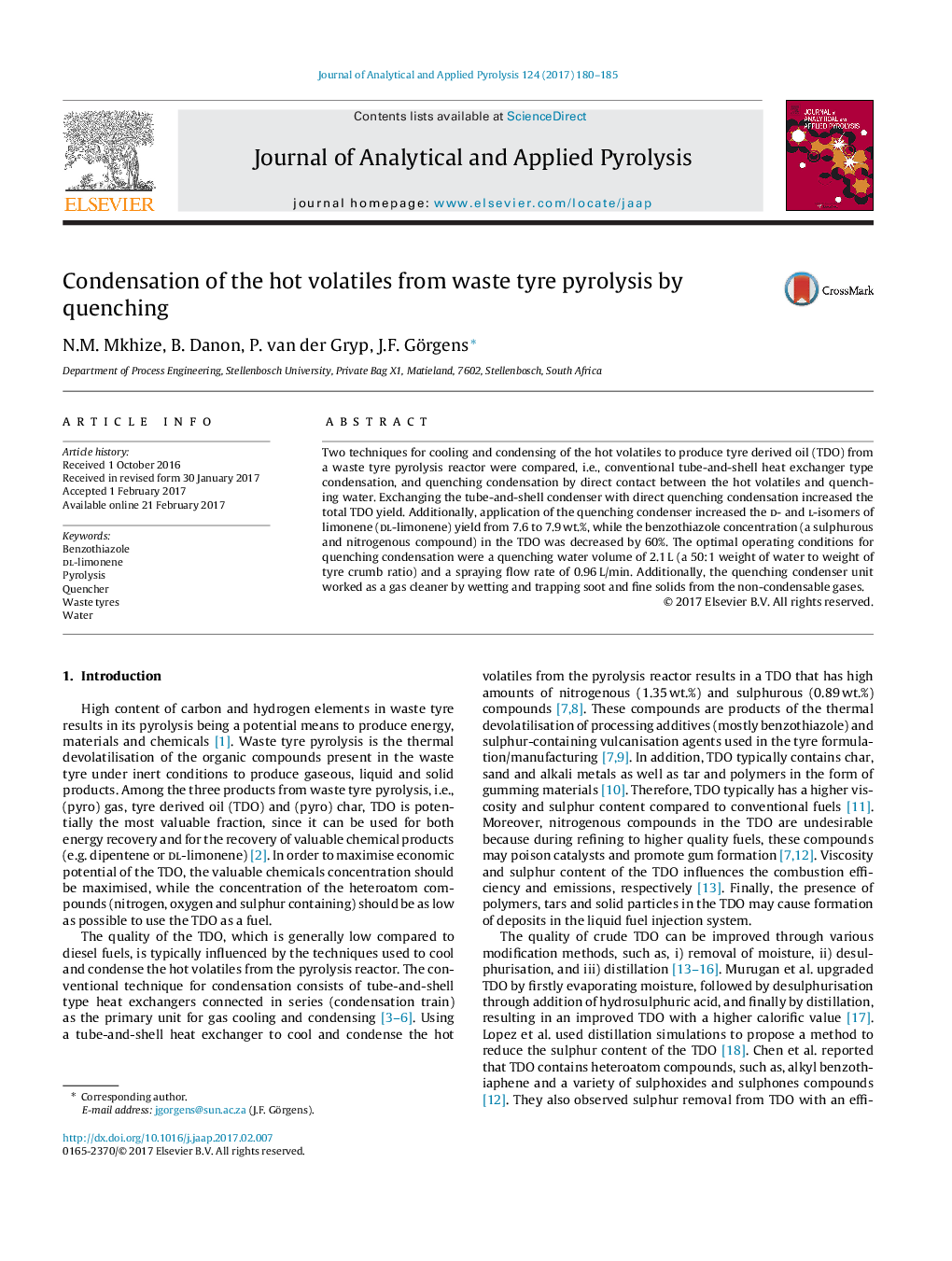| Article ID | Journal | Published Year | Pages | File Type |
|---|---|---|---|---|
| 5134583 | Journal of Analytical and Applied Pyrolysis | 2017 | 6 Pages |
â¢Conventional tube-and-shell heat exchanger condensation is replaced by quenching condensation through direct contact between the hot volatiles and quenching water.â¢The hot volatiles from a pyrolysis reactor yield more tyre derived oil (TDO) when treated with quenching condenser compared to tube-and-shell condenser.â¢Limonene yield and concentration in the TDO increase when the tube-and-shell condenser is replaced by a quenching condenser.â¢Heteroatom compounds (nitrogenous, oxygenous and sulphurous compounds) concentration in the TDO decreases when the tube-and-shell condenser is replaced by a quenching condenser.â¢The quenching condenser unit worked as a gas cleaner by wetting and trapping soot and fine solids from the non-condensable gases.
Two techniques for cooling and condensing of the hot volatiles to produce tyre derived oil (TDO) from a waste tyre pyrolysis reactor were compared, i.e., conventional tube-and-shell heat exchanger type condensation, and quenching condensation by direct contact between the hot volatiles and quenching water. Exchanging the tube-and-shell condenser with direct quenching condensation increased the total TDO yield. Additionally, application of the quenching condenser increased the d- and l-isomers of limonene (dl-limonene) yield from 7.6 to 7.9Â wt.%, while the benzothiazole concentration (a sulphurous and nitrogenous compound) in the TDO was decreased by 60%. The optimal operating conditions for quenching condensation were a quenching water volume of 2.1Â L (a 50:1 weight of water to weight of tyre crumb ratio) and a spraying flow rate of 0.96Â L/min. Additionally, the quenching condenser unit worked as a gas cleaner by wetting and trapping soot and fine solids from the non-condensable gases.
